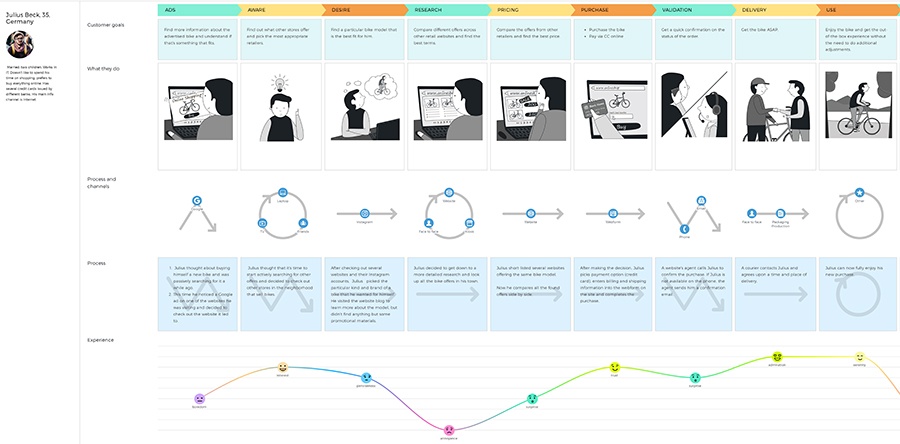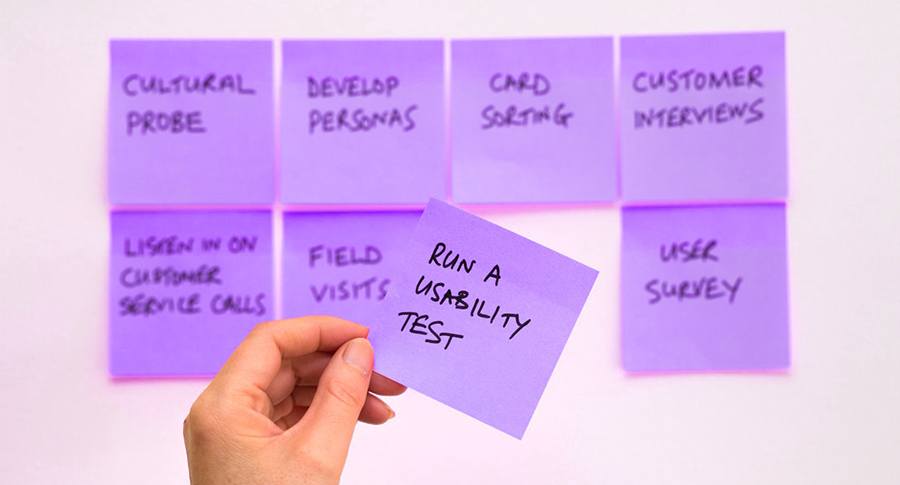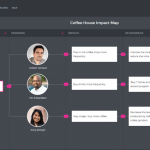We all know that one-off customer (or employee) journey maps are no good. And we know that a journey map proves to be a valuable practice only when it’s kept as a living document that constantly evolves. But how often should you update your customer journey map? That’s a question all journey practitioners ask. Should it be once a month? Once a quarter? Once a year?
As with pretty much everything, there is no right or wrong answer here. However, there are a few reasonable guidelines you can follow. Read on to get 5 proven strategies under your belt.
Contents
What's your journey type?
First off, how often one should update a customer journey map can depend on the map type.

Tactical vs. strategic journeys
Your tactical journey is the one you would use as a sort of roadmap of improvements for a small area of your business. This can be a journey of a website visitor or a journey that spans through the purchasing experience of your B2B clients. In general, these are low-level journeys — factors in the larger equation.
Strategic journeys, on the other hand, are the equation itself. These are overarching journeys that provide the bird’s-eye view.
By now, you probably figured that the former type is the one you would review, tweak, and update on a weekly basis give or take. Tactical journeys tend to be project-based, so their lifespan is far shorter compared to strategic journeys.
And when you look at strategic journeys, these are the ones you will most likely review every 6 months or every year even. At least not until you pivot your strategy.
As-is vs. to-be
This is another classification you might want to consider when answering the topic’s question. To a certain extent, maps that show the current state of the journey will most likely need updates every time there’s a critical amount of changes that happen so that you and your organization don’t lose sight of what the journey looks like now as this will inform both your tactical and strategic journeys.
To-be journeys are somewhat similar to the strategic ones as they transmit your vision of how things should be and they can be considered tactical roadmaps themselves. It’s probably obvious that these will change along with your vision.
Trigger-based updates
How often you should update your customer journey map can also be based on the following triggers.
Critical mass of updates
We touched on this one when talking about as-is journeys. Every time your product or service receives a significant update, consider that a trigger for reviewing your journey maps that get affected by this change.
Products are always evolving and processes are changing to some degree and the map needs to reflect that. So whenever something substantive changes within the business that would affect customers, the map should be evaluated and updated. Over time you may improve one pain point, but then another one emerges that wasn’t a pain point previously. The map should be updated to reflect this.”
Karl Sharicz, HorizonCX
You see where we are getting with this, don’t you?
As soon as your tactical journey project is done and you ticked off the last to-do on your never-ending list of improvements, it’s time to revisit the journey and see what it looks like now. It’s exactly what it means to turn your journey into a living document and an ongoing effort.
New research data
But not always big changes happen at your will. More often than not, the reality changes without you lifting a finger.

Any shift in the market landscape, whether it’s a new competitor or a new trend (these come and go so fast these days), may result in the transformation of your customer journey.
Let’s say a new customer persona was recently uncovered. That’s cause for re-evaluation and perhaps even developing an entirely new map. It’s a very dynamic process.
Karl Sharicz, HorizonCX
This will require you to have a research team scan the surroundings all the time. And every time they have significant intel — you know it — time to revisit your customer journey maps. And the effort is well worth it.
Set some interval
Even if none of the above fits your scenario, setting a timer to countdown till next time you sit down and review your customer journey will never hurt. To make things simple, do it quarterly and you won’t go wrong with that.
Assign the responsible person(s)
Final tip: make sure there’s a dedicated person or a group of individuals who are responsible for keeping your maps up-to-date. You can divide and conquer, or rather decide on who will be updating which part of the maps.
Whatever you decide in the end, make sure you endorse a culture where people aren’t afraid of tweaking journey maps — they’re not Louvre paintings, they’re meant to be updated!
Anastasia Schebrova, Chief Experience Officer at UXPressia
Choose the right tool
Having the right toolset to support your ongoing journey mapping efforts is instrumental in getting a decent result.
Journey maps created on paper will stay on paper.
...unless they migrate to an obsolete spreadsheet where they spend their last days sitting on someone’s hard drive so that one day that someone can say “oh yeah, we’ve done some journey mapping” during a coffee break.
If that puts a sad smile on your face, we’ve got good news for you.
Back in the day, we created UXPressia to help companies build live libraries of customer and employee journey maps. And today, hundreds of organizations all across the world use our tools to bring their journey maps to life and make sure they finally drive meaningful changes.
Chances are, you can get a great deal of value out of this as well. It’s free, so there is no excuse not to try.





